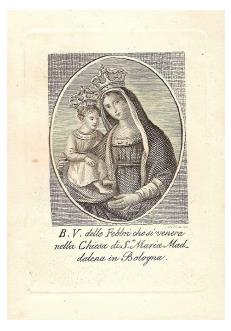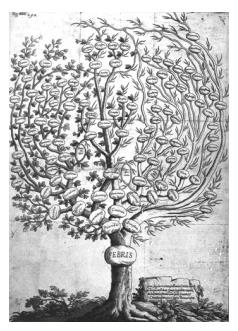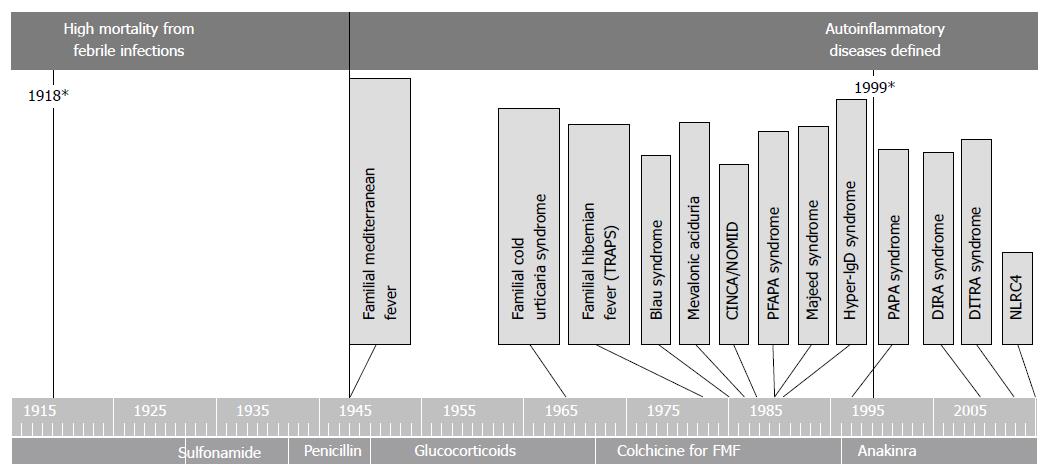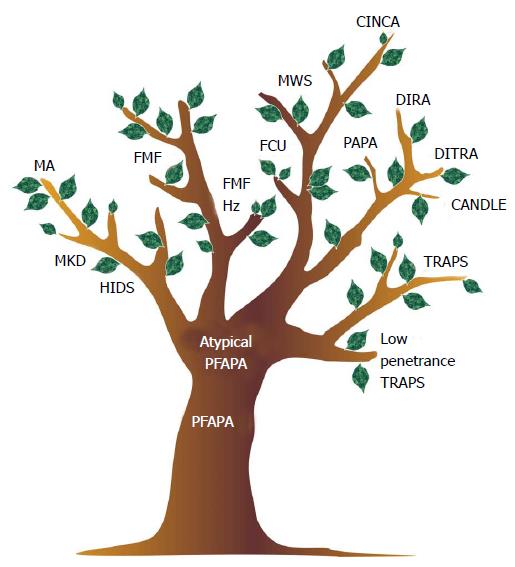Copyright
©The Author(s) 2015.
World J Clin Pediatr. Nov 8, 2015; 4(4): 106-112
Published online Nov 8, 2015. doi: 10.5409/wjcp.v4.i4.106
Published online Nov 8, 2015. doi: 10.5409/wjcp.v4.i4.106
Figure 1 The Virgin Mary of Fevers, by Nicola Mellini, XIX century, Bologna, Italy.
Figure 2 The fever tree, Francesco Torti (image from the Comenius Project, http://89.97.218.226/web1/pontina/biologia/p_37.htm)[10].
Figure 3 Timeline discovery periodic fevers autoinflammatory disease.
PFAPA: Periodic fever adenitis pharyngitis aphthae; DITRA: Deficiency or interleukin-36-receptor antagonist deficiency; DIRA: Deficiency of interleukin-1–receptor antagonist; PAPA: Pyogenic arthritis, pyoderma gangrenosum, and acne.
Figure 4 The fever tree revisited.
PFAPA: Periodic fever adenitis pharyngitis aphthae; MKD: Mevalonate kinase deficiency; FMF: Familial mediterranean fever; HIDS: Hyper-IgD syndrome; CINCA: Chronic infantile neurologic cutaneous and articular syndrome; MWS: Muckle wells syndrome; DIRA: Deficiency of the interleukin-1 receptor antagonist; FCU: Familial cold urticaria; DITRA: Deficiency or interleukin-36-receptor antagonist deficiency; MA: Mevalonic aciduria.
- Citation: Pastore S, Vuch J, Bianco AM, Taddio A, Tommasini A. Fever tree revisited: From malaria to autoinflammatory diseases. World J Clin Pediatr 2015; 4(4): 106-112
- URL: https://www.wjgnet.com/2219-2808/full/v4/i4/106.htm
- DOI: https://dx.doi.org/10.5409/wjcp.v4.i4.106












